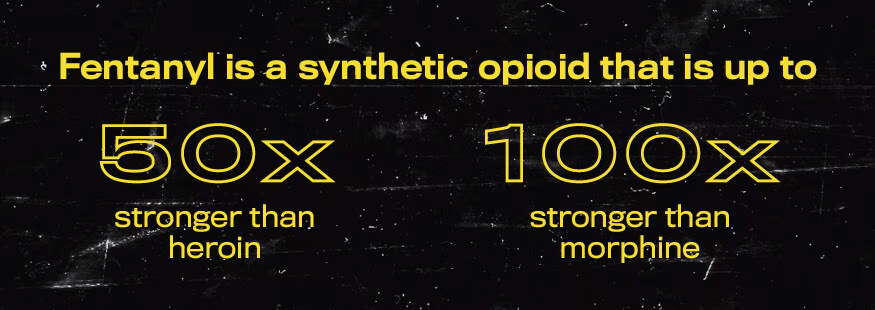
Mega Doctor News
Fentanyl is a synthetic opioid that is up to 50 times stronger than heroin and 100 times stronger than morphine. It is a major contributor to fatal and nonfatal overdoses in the U.S.1

There are two types of fentanyl: pharmaceutical fentanyl and illegally made fentanyl. Both are considered synthetic opioids. Pharmaceutical fentanyl is prescribed by doctors to treat severe pain, especially after surgery and for advanced-stage cancer.
However, most recent cases of fentanyl-related overdose are linked to illegally made fentanyl, which is distributed through illegal drug markets for its heroin-like effect. It is often added to other drugs because of its extreme potency, which makes drugs cheaper, more powerful, more addictive, and more dangerous.
Illegally made fentanyl (IMF) is available on the drug market in different forms, including liquid and powder1.
Powdered fentanyl looks just like many other drugs. It is commonly mixed with drugs like heroin, cocaine, and methamphetamine and made into pills that are made to resemble other prescription opioids. Fentanyl-laced drugs are extremely dangerous, and many people may be unaware that their drugs are laced with fentanyl.
In its liquid form, IMF can be found in nasal sprays, eye drops, and dropped onto paper or small candies.
Fentanyl and Overdose
Fentanyl and other synthetic opioids are the most common drugs involved in overdose deaths.1 Even in small doses, it can be deadly. Over 150 people die every day from overdoses related to synthetic opioids like fentanyl.2
Drugs may contain deadly levels of fentanyl, and you wouldn’t be able to see it, taste it, or smell it. It is nearly impossible to tell if drugs have been laced with fentanyl unless you test your drugs with fentanyl test strips.
Test strips are inexpensive and typically give results within 5 minutes, which can be the difference between life or death. Even if the test is negative, take caution as test strips might not detect more potent fentanyl-like drugs, like carfentanil.3
| Signs of overdose |
| Recognizing the signs of opioid overdose can save a life. Here are some things to look for: |
| Small, constricted “pinpoint pupils” |
| Falling asleep or losing consciousness |
| Slow, weak, or no breathing |
| Choking or gurgling sounds |
| Limp body |
| Cold and/or clammy skin |
| Discolored skin (especially in lips and nails) |
What to do if you think someone is overdosing
It may be hard to tell whether a person is high or experiencing an overdose. If you aren’t sure, treat it like an overdose—you could save a life.
| Call 911 Immediately.* |
| Administer naloxone, if available.** |
| Try to keep the person awake and breathing. |
| Lay the person on their side to prevent choking. |
| Stay with the person until emergency assistance arrives. |
*Most states have laws that may protect a person who is overdosing or the person who called for help from legal trouble.
** Naloxone is a life-saving medication that can reverse the effects of opioid overdose and save lives. It is available in all 50 states and can be purchased from a local pharmacy without a prescription in most states.
Information Source: CDC
References:
- Wilson N, Kariisa M, Seth P, Smith H IV, Davis NL. Drug and Opioid-Involved Overdose Deaths — United States, 2017–2018. MMWR Morb Mortal Wkly Rep2020;69:290–297. DOI: http://dx.doi.org/10.15585/mmwr.mm6911a4
- NCHS, National Vital Statistics System. Estimates for 2020 are based on provisional data. Estimates for 2015-2019 are based on final data (available from: https://www.cdc.gov/nchs/nvss/vsrr/drug-overdose-data.htm).
- Bergh, Marianne Skov-Skov et al. “Selectivity and sensitivity of urine fentanyl test strips to detect fentanyl analogues in illicit drugs.” The International Journal on Drug Policy. Vol. 90 (2021): https://doi.org/10.1016/j.drugpo.2020.103065












